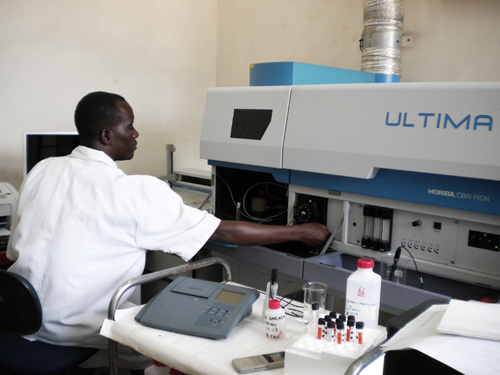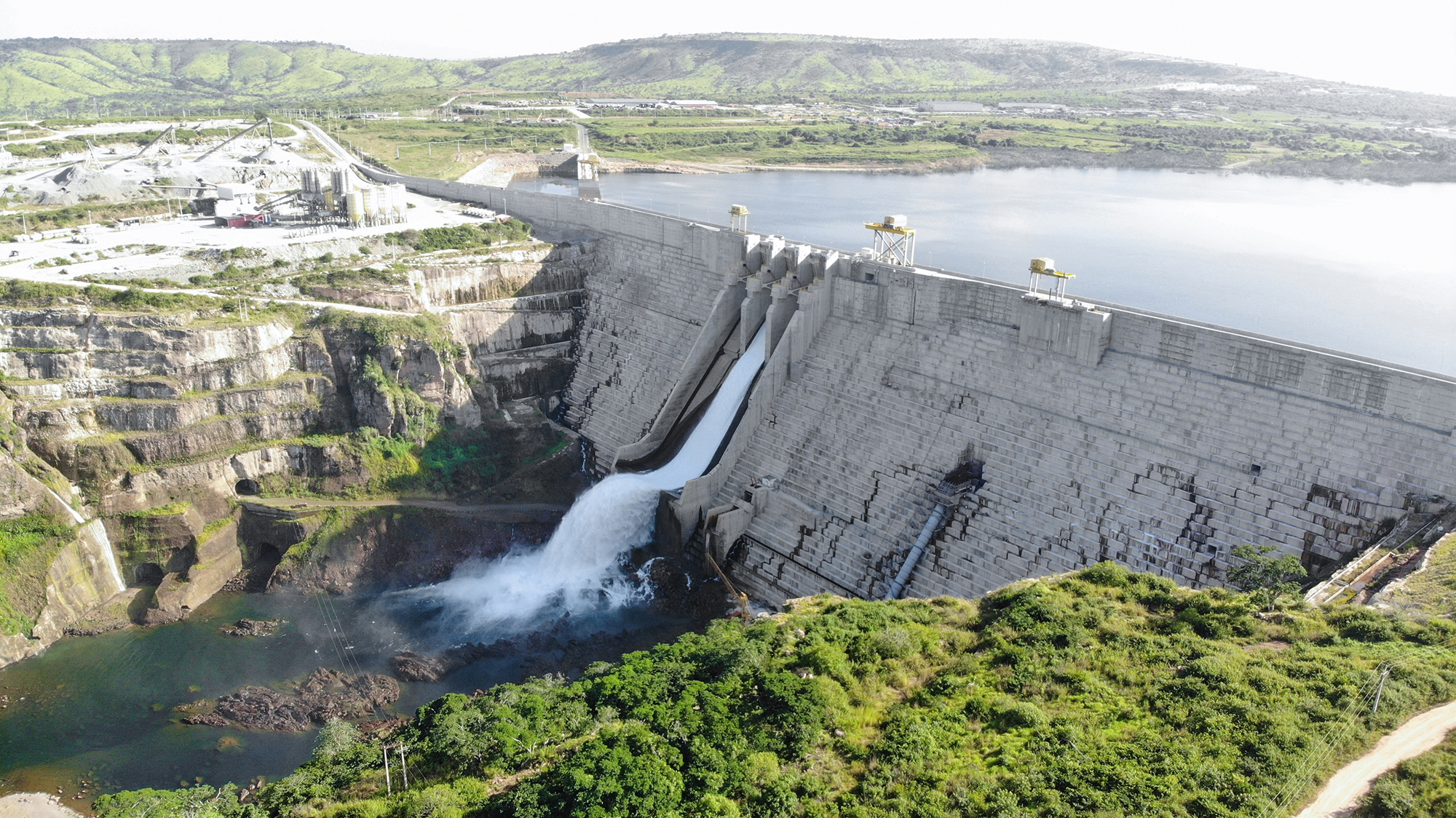
SEAMIC traces its origins back to the late 1970s with the establishment of the Eastern and Southern African Mineral Resources Development Centre (ESAMRDC), supported by UNDP and various bilateral support programmes from the UK and Japan. Its headquarters were established in Dodoma in central Tanzania, and in those days its remit was principally to carry out regional geological surveying and to provide consulting services for programs of its founding member states, Ethiopia, Tanzania and Mozambique. These were later joined by Uganda, Angola and the Union of the Comoros followed by Kenya in 2006 and Sudan in 2010 bringing the total membership to eight. The name ESAMRDC was also changed to the more pronounceable SEAMIC, and moved its operations to an extensive new site at Kunduchi, to the north of Dar es Salaam. In 2007, at a meeting in Maputo, Mozambique the organisation announced that it was now open to all African states, with a mandate to provide mineral related quality services and testing as well as consultancy work for the private and public sectors. The mission of the Centre is to “Promote socio-economic and environmentally responsible mineral sector development in Africa.”
The Director General Ketema Tadesse, who served as Chairman of the Board of Directors from 1997 until he took over the executive leadership in 2006 to lead the organisation through the next phase of its development. He explains the changes he has seen so far as follows. “In the late 1990s, thanks to the well advanced restructuring programmes in Africa and the privatisation of the minerals sector by African states, the role of governments with respect to the mineral sector was changed to become a regulatory body, and because of this the role of SEAMIC was also changed. SEAMIC was reorganised with a new role to provide mineral related services and trainings and hence started to draw in the private sector as well as public institutions. The new role of the Centre was realigned to become a mineral resource services provider”. The Centre has a Governing Council, made up of the Ministers responsible for mineral resources from the member states. It is supported by a standing committee of the Ministers' advisers. The Board of Directors supervises the activities of the Centre and reports to the Governing Council which meets once a year to approve the work programme and budget of the Centre.
SEAMIC is now an ISO 9001:2008 certified institution, with state-of-the-art laboratories. “The facility provides the member states and the private sector, including small and large scale mining operations with geoinformation and associated data processing services, particularly geochemical and airborne geophysical data processing and mineral analytical laboratory services, for the entire region,” he says.
The work of the Centre is distributed across two major departments providing five technical services. These are:
1. Testing of chemical and environmental samples is carried out in the laboratories under the Chemical & Environmental Service, whose capabilities include whole rock analysis, X-ray fluorescence (XRF) and AAS/ICP-OES techniques, fire assay gold analysis and purification.
2. Mineralogical, Petrological and Gemmological Service conducts analyses including X-ray diffraction technique; to name only a few of the techniques at its disposal.
3. Then there's the Minerals Processing and Small Scale Mining Service that serves big mining companies and small scale mining operations in processing and upgrading of different types of minerals and conventional bench scale operations.
4. Industrial Minerals Applications Service for bench scale industrial minerals product development mainly ceramic assay crucibles, tableware and other products.
5. Geoinformation Services for geoscience data management and dissemination.
There are 35 permanent members of staff, with a core of nine professionals, five technicians and seven laboratory assistants. The Kunduchi site covers a large area, Tadesse points out, and it needs its large warehouses to house all the rock samples it is sent for archiving and sample preparation prior to analysis. The laboratories themselves are fully equipped and certified. Work on mineral processing, chemical and environmental analysis, gemmology and petrology (including a separate lapidary unit for working on grinding and polishing gemstones) all have their own separate sections, and there is another for industrial minerals.
On the one hand these facilities are working laboratories, providing services to clients – at cost (without any profit) both to member governments and the private sector clients, making this undoubtedly the best value-for-money resource available in Africa. “Our principal activity is making these high tech analytical services available to major companies, to small scale enterprises, and also to our member states with a view to provide an incentive to developers and thereby accelerate mineral resources development in the member states,” says Tadesse. “And within the technical departments we also provide training in instrumental analysis, sample preparation, assaying gold and precious metals and a whole range of other specialisms for university students and the private sector.”
On the other hand this is a training facility, unique on the continent of Africa and possibly one of its best kept secrets. Demand for its services will grow significantly as more states join SEAMIC, and the proposed students' hostel at Kunduchi, for which the land has been set aside, will be built. Training is a significant source of funds for the Centre, though no fees are charged to universities and students sent by member governments and private companies are charged at cost. Among the courses on offer are a three week gemstone cutting course for miners, dealers and other interested parties, mineral laboratory management, environmental analysis, ore beneficiation testing methods, geophysics and geoscience data processing.
The lion's share of SEAMIC's income which is up to 60 percent comes from the US $62,000 annual contribution paid by each member state, while the remaining income of 40 percent is derived from the sale of other services and training activities, notably chemical and environmental analysis and the work done on samples by the minerals processing laboratory. A further source of income is consultancy work, gem cutting and identification, and ceramics. The last is a growing capability: the ceramics laboratory has produced low tension electrical insulators and fire clay crucibles for the regional markets, and now makes a range of tableware that is sold to support the work of the Centre.
The geoinformation department deals with data processing and management as well as documentation and archiving data. This important work contributes to the mapping of geological data for the whole of Africa, and SEAMIC co-ordinates the submission of the survey data from different states to the One Geology portal, which aims to create dynamic digital geological map data for the whole world. The information for Tanzania, Uganda, Kenya and Ethiopia has already been uploaded.
SEAMIC has achieved much under Ketema Tadesse but he has a number of other pressing objectives in his sights. One is to pursue capital projects through joint venturing – an example would be to establish a gold refining plant on the Dar es Salaam site. Another is to advance the goals of the African Mining Vision (AMV), which was adopted by Heads of State at the February 2009 African Union summit following the October 2008 meeting of African Ministers responsible for Mineral Resources Development. “It aims to make better use of Africa's mineral wealth in ways that will benefits population and help them rise out of poverty,” he says. The AMV is a first and foremost developmental mining approach that insists that the road to growth is through building economic and social linkages that benefit Africa itself. The African Mineral Development Centre (AMDC) an implementation body for AMV has been established by the African Union through the support of the United Nations Economic Commission for Africa (UNECA) and the African Development Bank (AfDB) which will make use of the services of SEAMIC’s Geoinformation facilities and expertise in realising this vision. This programme for the coming five years will be funded by the World Bank and the governments of Australia and Canada with the aim of collecting geoscience data and process the same; and analyse samples generated from explorations activities from all African countries. SEAMIC has the capacity to receive and analyse this data, and the Director is keen to see the agreement finalised.
A further goal is to set up a regional minerals analytical 'fingerprinting' laboratory for the eleven member states of the International Conference on the Great Lakes Region (ICGLR), headquartered in Burundi. Its main objective will be to install a high tech laser ablation mass spectrometry (LA-ICP-MS) analytical technique to pinpoint where particular minerals come from with the view to avoid exportation from conflict zones. The program is designed to stop illegal mining activities that are fuelling conflicts in the Great Lakes Region. “All the ore deposits in the Great Lakes region will be analysed and entered into a database. Anyone wishing to sell a commodity will be obliged to send it to the laboratory for analysis to be established at SEAMIC. Once the samples are analysed by the LA-ICP-MS analytical technique the results are sent to Burundi to be matched against their master database. The benefits to these governments will be incalculable, and it will be a useful source of revenue for SEAMIC too.”
As set up, and as defined by its name, SEAMIC is a regional body. However as soon as it concretises its pan-African initiative and as other countries outside of the eastern and southern African region join the organisation, SEAMIC will have to drop its S and E and align itself with the new agency being set for the whole of Africa, “... to create equitable, transparent and optimal exploitation of Africa’s mineral resources.” The African Minerals Development Centre's creation by the AU and UNECA that was announced in March this year, is envisaged to benefit SEAMIC in the very near future as the data processing work that will result from the setting up of this new body will be allocated to SEAMIC. To make use of the expertise and the already installed laboratories invitations have been sent by SEAMIC to all mineral rich African nations to join the Centre.
Written by John O’Hanlon, Research by Candice Nice
DOWNLOAD
 SEAMIC-Africa-Mining-Dec13-Bro-s.pdf
SEAMIC-Africa-Mining-Dec13-Bro-s.pdf













